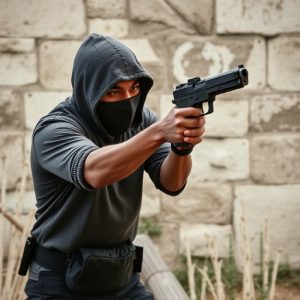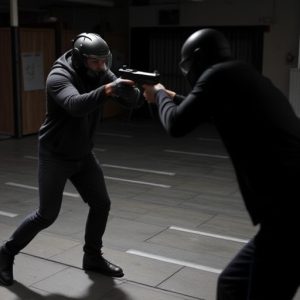Debilitating Electrical Charge Weapons: Design, Safety, and Legal Insights
The best safety features in stun guns focus on both user control and effectiveness, incorporating ad…….
The best safety features in stun guns focus on both user control and effectiveness, incorporating advanced motion sensors, customizable force settings, durable construction, and waterproof designs. Key components like high-voltage batteries power electrical circuits, while microprocessors regulate voltage and pulse width for safe operations. Modern stun guns feature secure locking systems, automatic shut-off mechanisms, and smart sensors to prevent accidental activations and minimize risk. With voltages ranging from 12-35 volts, these devices balance potency with safety considerations, ensuring reliable and ethical self-defense without causing severe harm. Advanced technologies like smart sensors and adjustable ranges enhance performance during high-stress situations, making stun guns effective personal safety tools when used responsibly under local legal guidelines.
“In today’s world, personal safety is paramount. Debilitating electrical charge weapons, commonly known as stun guns, offer a non-lethal self-defense solution for individuals seeking peace of mind. This article explores the multifaceted aspects of these powerful tools, from their key components and safety features to power specifications, activation mechanisms, and legal considerations. Discover the best safety features in stun guns and learn how responsible ownership can ensure personal security without causing harm.”
- Understanding Stun Guns: A Non-Lethal Self-Defense Tool
- Key Components of a Stun Gun's Design
- Safety Features: Protecting Users and Bystanders
- Power and Voltage: The Force Behind the Stun
- Range and Activation Mechanisms: Ensuring Effective Response Times
- Legal Considerations: Responsible Ownership and Use
Understanding Stun Guns: A Non-Lethal Self-Defense Tool
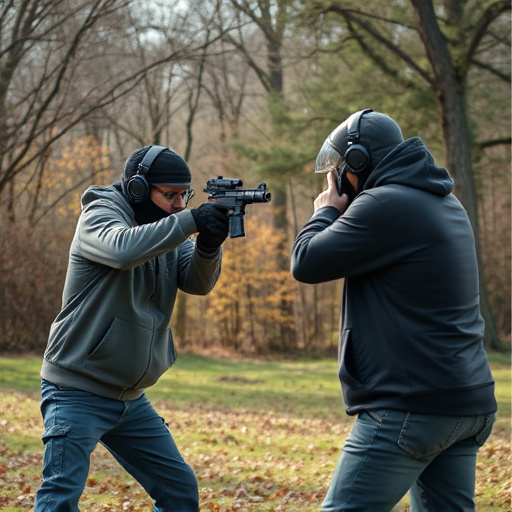
Stun guns, also known as electroshock weapons, are designed to incapacitate a target with an intense electrical discharge, providing a powerful non-lethal self-defense option. These tools have become increasingly popular among individuals seeking effective personal safety measures. The primary goal of a stun gun is to disrupt muscle control by delivering a high voltage, low amperage electric pulse, rendering the assailant temporarily paralyzed.
When considering the best safety features in stun guns, several key aspects come into play. Top-tier models often incorporate advanced safety mechanisms like motion sensors and activation triggers, ensuring that the device deploys only when intended. Some modern stun guns also offer customizable settings for varying levels of force, allowing users to adapt to different situations without causing undue harm. Additionally, durable construction and waterproof designs contribute to their reliability and versatility in diverse environments.
Key Components of a Stun Gun's Design
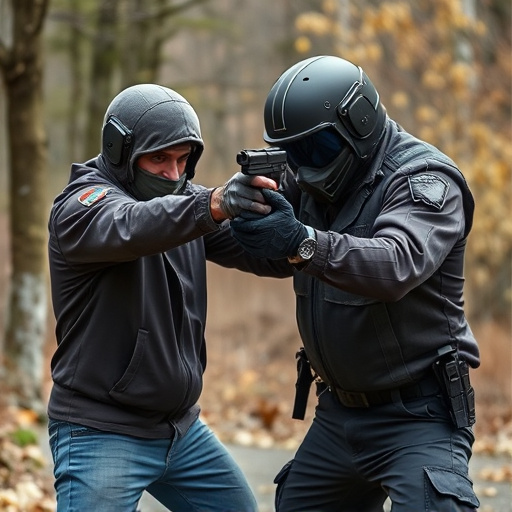
The design of a stun gun, or electroshock weapon, is carefully engineered to deliver a powerful yet controlled electric shock. Key components include an energy source, typically high-voltage batteries, which power the device’s electrical circuit. This circuit is designed to produce a momentary, intense current that overrides the body’s natural electrical systems, causing muscle paralysis and disorientation. The best safety features in stun guns focus on controlling this output to ensure minimal risk to users and bystanders.
These safety mechanisms often involve sophisticated microprocessors that precisely regulate the voltage and pulse width of the shock. Some models employ automatic shutdowns after a set activation duration or when the trigger is released, preventing accidental prolonged shocks. Additionally, stun guns may feature protective outer casings made from impact-resistant materials and include advanced insulation technologies to prevent electrical discharge during use or storage.
Safety Features: Protecting Users and Bystanders
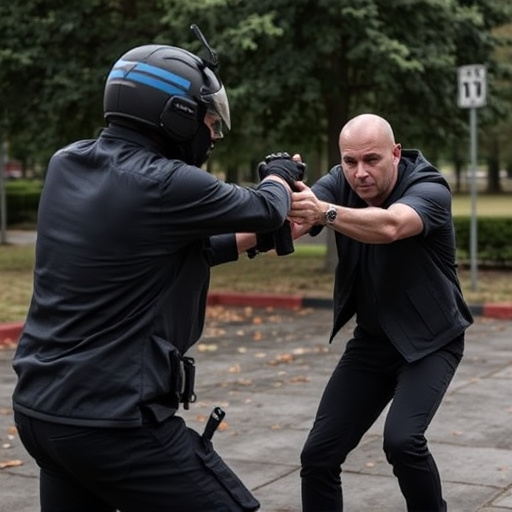
The best safety features in stun guns are paramount for both users and bystanders, ensuring that these powerful self-defense tools operate with maximum effectiveness and minimal risk. Modern stun guns often incorporate advanced safety mechanisms to prevent accidental activations and unauthorized use. These include secure locking systems, automatic shut-off features after a set stun cycle, and innovative design elements that render them inoperable if dropped or mishandled.
Furthermore, some models utilize smart sensors and predictive algorithms to discern between potential threats and harmless objects, reducing the risk of accidental discharges. These safety features not only protect users from unintended harm but also foster public acceptance of stun guns as a responsible self-defense option.
Power and Voltage: The Force Behind the Stun
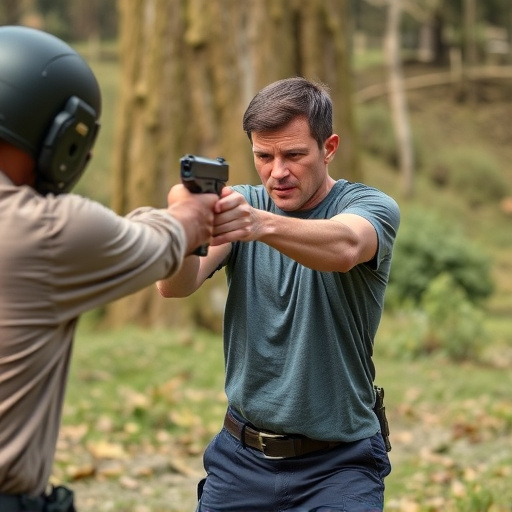
Power and Voltage: The Force Behind the Stun
The effectiveness of a stun gun largely relies on its power and voltage output, which act as the driving force behind the stun. Best safety features in stun guns often include precise voltage regulation to ensure the device delivers just enough jolt to incapacitate without causing severe harm. Modern stun guns typically operate within 12-20 volts, with some high-end models reaching up to 35 volts. This range allows users to balance power with safety, ensuring that the stun gun is potent enough for self-defense but not so intense as to inflict permanent damage.
The power output should also consider factors like pulse width and current, which determine how long the stun effects last and the overall impact on the target. A well-designed stun gun incorporates safety mechanisms such as automatic shutoff features to prevent accidental prolonged shocks and over-discharge protection to safeguard both the user and the device itself. These best practices in design contribute to making stun guns reliable tools for personal safety, without compromising ethics or safety standards.
Range and Activation Mechanisms: Ensuring Effective Response Times
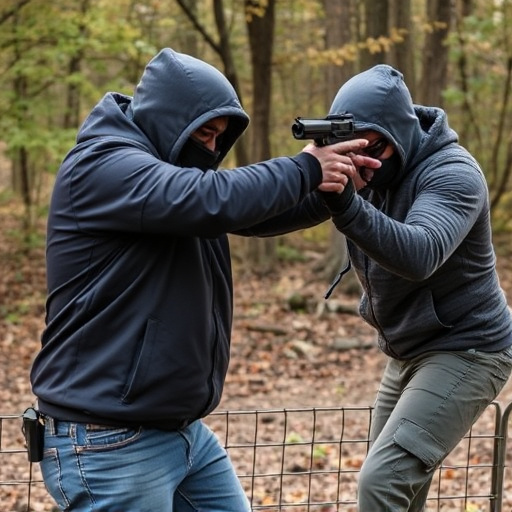
The effectiveness of a stun gun, or an electrical charge weapon, lies closely tied to its range and activation mechanisms. A key consideration in these aspects is ensuring swift response times for users. Top-tier stun guns employ advanced technologies like smart sensor systems that detect movement and activate instantly upon trigger pull, minimizing the critical distance between aggressor and victim. This immediate activation significantly increases the weapon’s effectiveness as it allows for a rapid response during high-stress situations.
Additionally, modern stun guns offer adjustable ranges, catering to different scenarios. Whether in close quarters or at longer distances, users can fine-tune their settings to match the situation, enhancing precision and safety. Best safety features in stun guns include auto shutoff mechanisms that prevent accidental discharges and smart circuitry designed to deliver optimal charges based on environmental conditions, ensuring user safety while maintaining effectiveness.
Legal Considerations: Responsible Ownership and Use
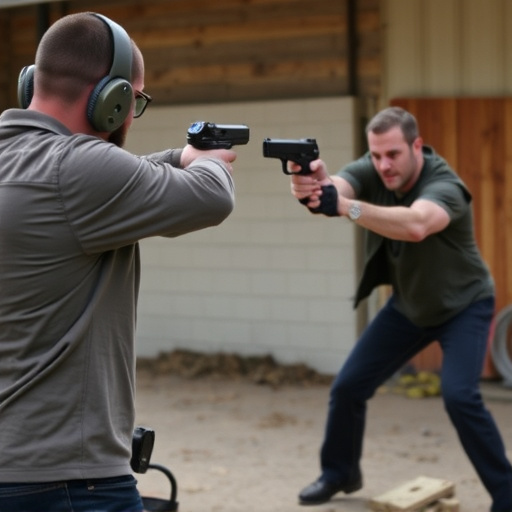
In the realm of personal safety devices, stun guns equipped with debilitating electrical charges have garnered attention for their potential to deter and disable assailants. However, alongside their functionality, responsible ownership and use are paramount due to legal considerations. Each jurisdiction has specific laws governing the possession, carrying, and application of such devices, underscoring the need for users to stay informed about local regulations.
Responsible ownership entails understanding and adhering to safety protocols, including proper storage, maintenance, and handling techniques. Equally important is the commitment to ethical use, ensuring that stun guns are employed only as a last resort for self-defense when all other means have been exhausted. Utilizing the best safety features in stun guns, such as safety switches and controlled output levels, can help mitigate risks associated with accidental discharge or excessive force.
In conclusion, stun guns offer a powerful non-lethal self-defense option, with their design focusing on key components like power source, voltage, and safe activation mechanisms. The best safety features in stun guns prioritize user protection and bystander safety, ensuring responsible ownership and use. Understanding these aspects is crucial when considering this handheld defense tool for personal safety.
